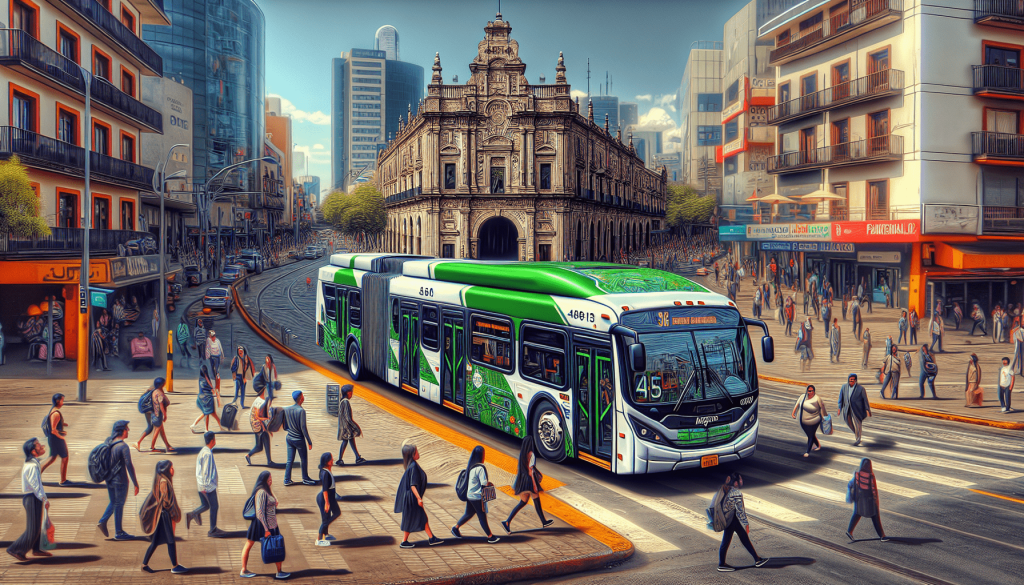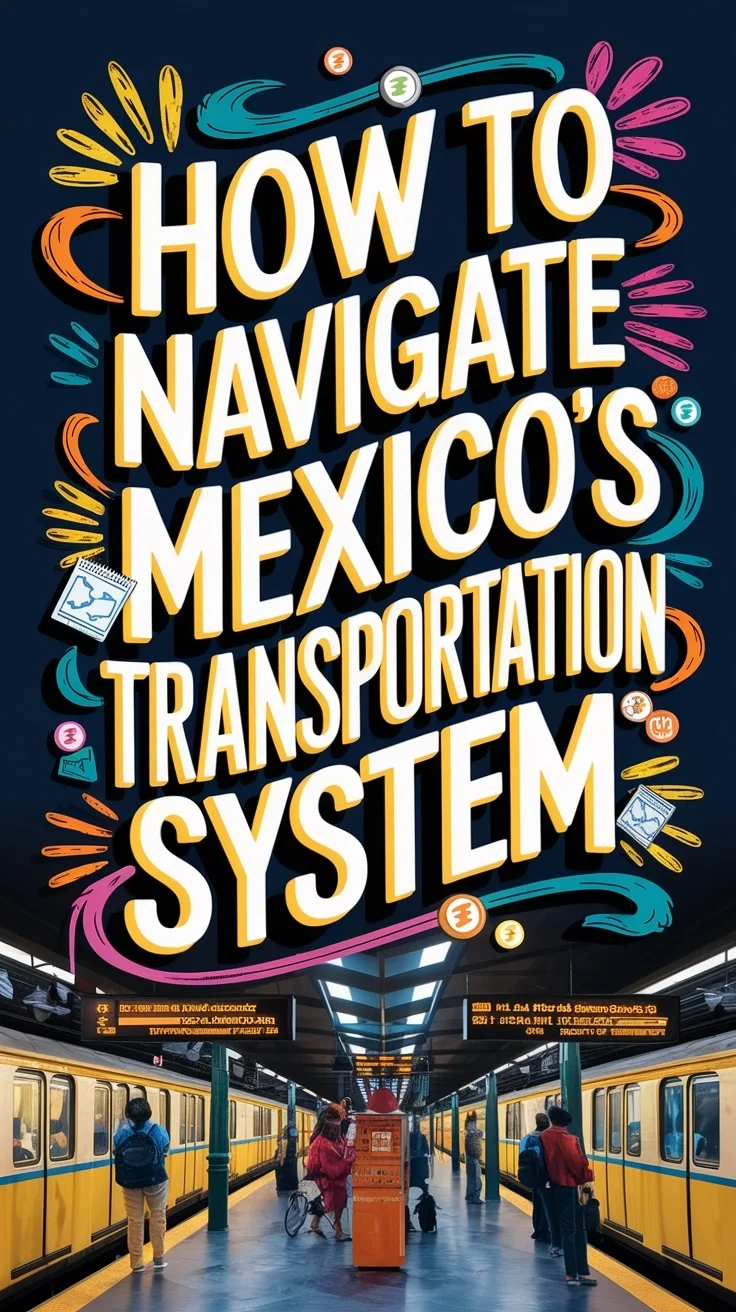Have you ever found yourself wondering how to navigate Mexico’s public transportation system? Whether you’re visiting for the first time or you’ve been here before, understanding how to get around can save you time and reduce stress.
An Overview of Mexico’s Public Transportation Landscape
Mexico boasts a diverse and efficient public transportation system. From urban metros and buses to regional trains and combis, the country offers a variety of options to suit different needs and budgets. Knowing the main modes of transport can be your first step to mastering the system.
Bus Systems
Buses are an integral part of public transport. Cities have their own networks, while intercity and interstate buses connect different parts of the country. You’ll find that buses are affordable, but can also vary in comfort and amenities.
Metro Systems
Cities like Mexico City, Monterrey, and Guadalajara have metro systems that are fast, frequent, and cost-effective. The metro is particularly useful in urban areas where traffic can be a serious issue.
Combi and Colectivo
These are smaller shared vans or mini-buses that follow specific routes. They are popular in smaller towns and rural areas, providing a flexible way to travel.
Taxis and Ride-Sharing
Taxis and apps like Uber and Didi offer more convenience but come at a higher cost. They can be lifesavers in areas where public transport isn’t as comprehensive.
Trains
While less common than buses and metros, some regions offer train services for longer journeys. For example, the Tequila Express from Guadalajara is a popular tourist route.
How to Use Mexico’s Bus Systems
Getting acquainted with the bus systems can open up a lot of travel possibilities. Buses in Mexico range from luxurious long-distance coaches to local city buses, making them suitable for various types of travel.
City Buses
City buses are the backbone of urban transport, especially in larger cities like Mexico City, Guadalajara, and Monterrey. They generally run from early morning until late at night. However, figuring out their routes can be a bit challenging, as not all stops are marked clearly.
Intercity Buses
If you’re planning to travel from one city to another, intercity buses are a reliable and comfortable option. Companies like ADO, ETN, and Primera Plus offer more luxurious amenities like recliner seats, Wi-Fi, and refreshments. Booking your ticket in advance is always a good idea, especially during holidays and weekends.
| Company | Routes | Amenities |
|---|---|---|
| ADO | Southern Mexico | Recliner seats, Wi-Fi, Refreshments |
| ETN | Central and Northern Mexico | Recliner seats, Personal screens, Snacks |
| Primera Plus | Most regions | Spacious legroom, Wi-Fi, Snacks |
How to Buy Tickets
You can purchase tickets at bus stations or book online for intercity routes. Using apps and websites can also help you compare prices, routes, and amenities. Remember to keep your ticket with you until the end of your journey as it might be checked during the trip.

Navigating Metro Systems
Metro systems in Mexico are some of the busiest in the world, especially in Mexico City. They are an excellent way to avoid traffic and get to your destination quickly.
Getting a Metro Ticket
You can buy single journey tickets or opt for rechargeable cards like the “Tarjeta del Metro” for added convenience. Metro stations usually have ticket vending machines and customer service counters to assist you.
Key Metro Lines
Each city has its own metro system quirks. In Mexico City, Line 1 (Pink Line) and Line 2 (Blue Line) are some of the most heavily used. Familiarize yourself with important transfer stations like Pantitlán and Tacubaya for Mexico City.
Metro Etiquette
During rush hours, metro cars can be incredibly crowded. Be prepared for a tight squeeze and always be mindful of your belongings. Mexico City’s metro also offers women-only cars during peak times.
| City | Key Lines | Important Stations |
|---|---|---|
| Mexico City | Line 1, Line 2 | Pantitlán, Tacubaya |
| Monterrey | Line 1, Line 2 | Cuauhtémoc, Fundadores |
| Guadalajara | Line 1, Line 2 | Juárez, Tetlán |
Understanding Combi and Colectivo Vans
Combis and colectivos are shared vans that operate on fixed routes but are more flexible than buses. They are particularly common in smaller towns and rural areas.
Routes and Fares
Routes can be less formal and are often adjusted based on demand. Fares are usually fixed but very affordable. It’s a good idea to ask local residents or drivers about the best combi to take.
How to Catch a Combi
Unlike buses, combis don’t always have designated stops. Simply wave one down from the roadside and tell the driver your destination. Payment is usually made when exiting the vehicle.

Utilizing Taxis and Ride-Sharing Services
Sometimes, you need direct and private transportation, and that’s where taxis and ride-sharing services come in handy.
Taxis
Make sure to use registered taxis from official stands or resorts. In Mexico City, you’ll find two types: “libre” (free) taxis which can be flagged down on the street, and “sitio” (stand) taxis which are usually safer.
Ride-Sharing Apps
Apps like Uber and Didi are widely used in Mexican cities and offer added convenience, especially for tourists unfamiliar with the area. Remember that you might need an internet connection to use these services.
Train Travel in Mexico
Train travel isn’t as extensive as bus travel, but it’s worth mentioning for specific routes and experiences. For example, the Chepe train through the Copper Canyon offers breathtaking views and a scenic journey through the mountains.
Booking and Boarding
Tickets for trains like the Tequila Express or the Chepe can be booked online or at the station. Always check the timetable as services can be infrequent.
Key Tips for a Smooth Journey
Understanding the basics of Mexico’s public transportation is essential, but some additional tips can make your experience even more pleasant.
Use a Transportation App
Apps like Moovit and Citymapper can provide real-time information on public transit schedules and routes, making it easier to get around.
Local Advice
Don’t hesitate to ask locals for advice. Mexicans are generally very friendly and willing to help.
Safety Precautions
Always keep an eye on your belongings and be aware of your surroundings, especially in crowded places. If in doubt, opt for safer transport options like registered taxis or ride-sharing services.
Carry Small Change
Buses and combis often require exact change or small denominations of currency. Keep some handy to avoid hassle.
Conclusion
Navigating Mexico’s public transportation system might seem daunting at first, but with the right information, it becomes much easier. From buses and metros to combis and ride-sharing, you have a variety of options to choose from. Understanding how to utilize each mode of transport will enrich your travel experience and help you get the most out of your visit to this vibrant country. Whether you’re winding through the bustling streets of Mexico City or exploring smaller towns, you’ll find that getting around is an adventure in itself.
